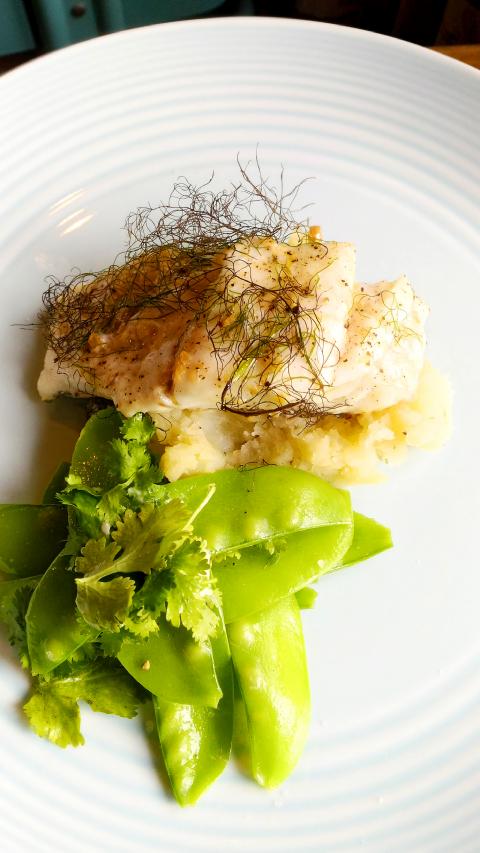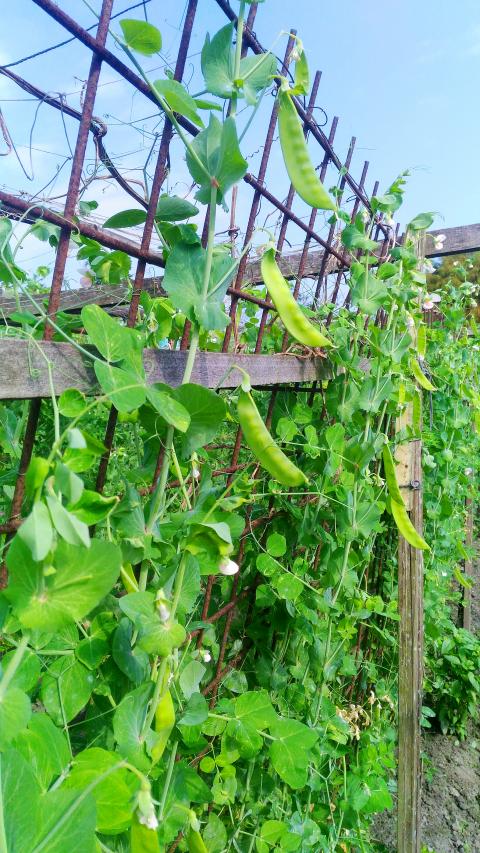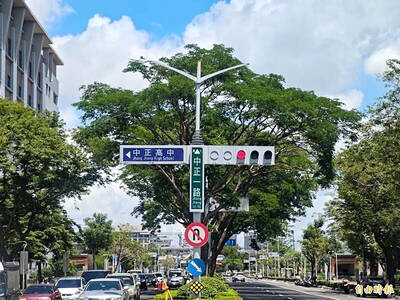It is the season for fresh Taiwan-grown snow peas and this can only be a reason for celebration. They have just started to appear in our local street-side market, the beautifully shaped pods promising a special treat.
The Taiwan strain of snow pea seems vastly more buff than those I grew up seeing in western vegetable markets, with pods often twice or three times the size. This used to concern me, as big does not always mean better in the vegetable world. But fear not, these massive pea pods deliver not just in taste but also in texture.
I was brought up on tiny little snow peas, no longer than a finger in length and with the thinnest of pods. These are pisum sativum var saccharatum, also called mangetout in French cuisine, and in local cuisine can be most clearly identified by their Hoklo name of Holland beans (荷蘭豆), presumably due to some introductory duties performed by early Dutch traders. They are thought to have originated in the Mediterranean and western Asia, but have adapted well to the more humid climate of Southeast Asia, though as indicated above, they seem to have adapted somewhat to the Taiwanese climate.

Photo: Ian Bartholomew
It is worth noting that while they are described as peas they are quite distinct from field or garden peas in that they have edible pods. There is some complex genetic reason why the pods lack the fibrous texture of most peas, which need to be shelled before eating. It is a trait that is shared with sugar snaps, which are also currently in season. These provide even greater crunch, and sometimes greater sweetness. However, unless you get them at their most tender, they have a higher risk of being stringy. The flavor profile of sugar snaps is also slightly different, currently being at their best and definitely sweeter moment. Both can be eaten raw and thrown into any salad with a nice dressing, but a hint of heat, whether from the wok or the steamer, is a great benefit in bringing out their full flavor.
And snow peas, especially the robust Taiwan variety, are packed with flavor — it’s just rather low-key and you don’t want to smother it. Mark Bittman, food writer for the New York Times, talking about a learning experience from an idiosyncratic Chinese chef in New Haven, put his finger on the main issue of snow pea preparation. With the stir-fry, the professional Chinese chef might use some high quality peanut oil and leave the flavoring there, with nothing other than the intense heat of the wok to bring out the flavor. Bittman was referring to the wok hei, translated poetically as the “breath of the wok” and more scientifically as “wok thermal radiation,” an effect that can sometimes be achieved in professional Chinese kitchens with massively hot stoves (and to be honest, is only really achieved in the very best establishments where chefs work in front of searingly hot gas flames that would not be out of place in an iron foundry).
On the home stove, stir frying snow peas has never worked for me, and I have always had a strong preference for the steaming basket. Get the water into a good rolling boil (let the water boil in a covered pot for 2 to 3 minutes before to place the steaming basket), and don’t let it stay there for more than 2 minutes. It is all about speed. After that, whether you want to toss it in butter and tarragon or sesame oil and basil is all up to you.

Photo: Ian Bartholomew
Grilled perch with smashed potatoes and snow peas
Recipe
(serves two)
If you have fresh snow peas, the less you do to them the better. In no instance that I know of do they benefit from too much fuss, as they are a poster veg for the slogan “less is more.” So the perch and potatoes that I have added to this recipe are pretty much just faff to make the peas come across as more sophisticated and classy. But now these lovelies are in season — particularly the Taiwan variety that are much larger than what is usually sold as snow peas in western markets. Just pop them in the steamer for a couple of minutes, toss them with butter, some nice sea salt and a generous grind of black pepper and you are done.
Ingredients
For the fish
2 pieces of perch, sea bass or other delicate white fish, skin removed (approx. 200g each)
1/4 of a preserved lemon
a small bunch of fennel tops
salt and pepper to season
olive oil
For the potatoes
2 potatoes
1/4 cup chicken stock
1 tbsp parsley, minced
1/4 cup diced tomatoes
1 clove garlic, minced
salt and pepper to season
For the snow peas
100g snow peas
20g butter
1 small bunch coriander
Salt and pepper to season
Directions
1. First wash the potatoes, placing them in a pot of water and bring to a boil. Once the water boils, cook for 30 minutes or until they can be easily pierced by a skewer. Drain and set aside.
2. Preheat oven at 220c. Season the perch fillets with salt and pepper. Throw on some minced preserved lemon and coat with olive oil. Top with fennel fronds and diced tomatoes (if using).
3. Top and tail the snow peas and place in a steaming basket. Bring a pot of water to a rolling boil then steam the peas for 2 minutes. Top with a knob of butter and some good sea salt.
4. Bring the chicken stock to a boil, then add the potatoes, mashing them down with a folk. Add the garlic, olive oil and parsley, and season to taste with salt and pepper.
5. Cook the fish on a high shelf in the oven for 8 to 10 minutes. Place on top of a stack of potatoes and serve with the buttered snow peas.
Ian Bartholomew runs Ian’s Table, a small guesthouse in Hualien. He has lived in Taiwan for many years writing about the food scene and has decided that until you look at farming, you know nothing about the food you eat. He can be contacted at Hualien202@gmail.com.

One of the most important gripes that Taiwanese have about the Democratic Progressive Party (DPP) is that it has failed to deliver concretely on higher wages, housing prices and other bread-and-butter issues. The parallel complaint is that the DPP cares only about glamor issues, such as removing markers of Chinese Nationalist Party (KMT) colonialism by renaming them, or what the KMT codes as “de-Sinification.” Once again, as a critical election looms, the DPP is presenting evidence for that charge. The KMT was quick to jump on the recent proposal of the Ministry of the Interior (MOI) to rename roads that symbolize

On the evening of June 1, Control Yuan Secretary-General Lee Chun-yi (李俊俋) apologized and resigned in disgrace. His crime was instructing his driver to use a Control Yuan vehicle to transport his dog to a pet grooming salon. The Control Yuan is the government branch that investigates, audits and impeaches government officials for, among other things, misuse of government funds, so his misuse of a government vehicle was highly inappropriate. If this story were told to anyone living in the golden era of swaggering gangsters, flashy nouveau riche businessmen, and corrupt “black gold” politics of the 1980s and 1990s, they would have laughed.

It was just before 6am on a sunny November morning and I could hardly contain my excitement as I arrived at the wharf where I would catch the boat to one of Penghu’s most difficult-to-access islands, a trip that had been on my list for nearly a decade. Little did I know, my dream would soon be crushed. Unsure about which boat was heading to Huayu (花嶼), I found someone who appeared to be a local and asked if this was the right place to wait. “Oh, the boat to Huayu’s been canceled today,” she told me. I couldn’t believe my ears. Surely,

When Lisa, 20, laces into her ultra-high heels for her shift at a strip club in Ukraine’s Kharkiv, she knows that aside from dancing, she will have to comfort traumatized soldiers. Since Russia’s 2022 invasion, exhausted troops are the main clientele of the Flash Dancers club in the center of the northeastern city, just 20 kilometers from Russian forces. For some customers, it provides an “escape” from the war, said Valerya Zavatska — a 25-year-old law graduate who runs the club with her mother, an ex-dancer. But many are not there just for the show. They “want to talk about what hurts,” she